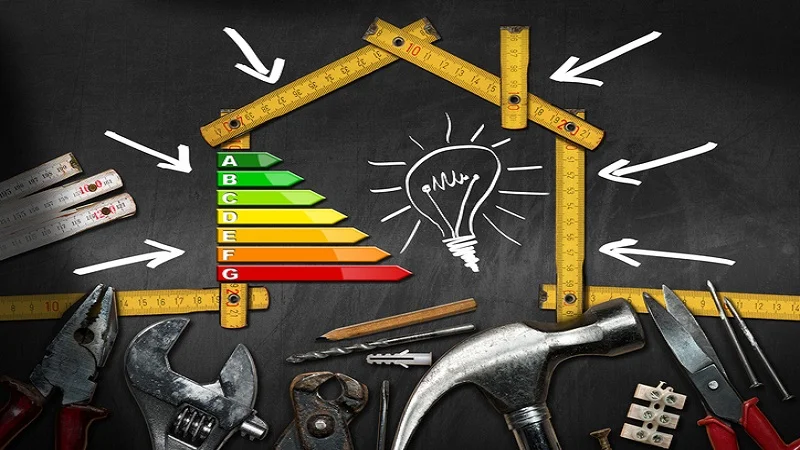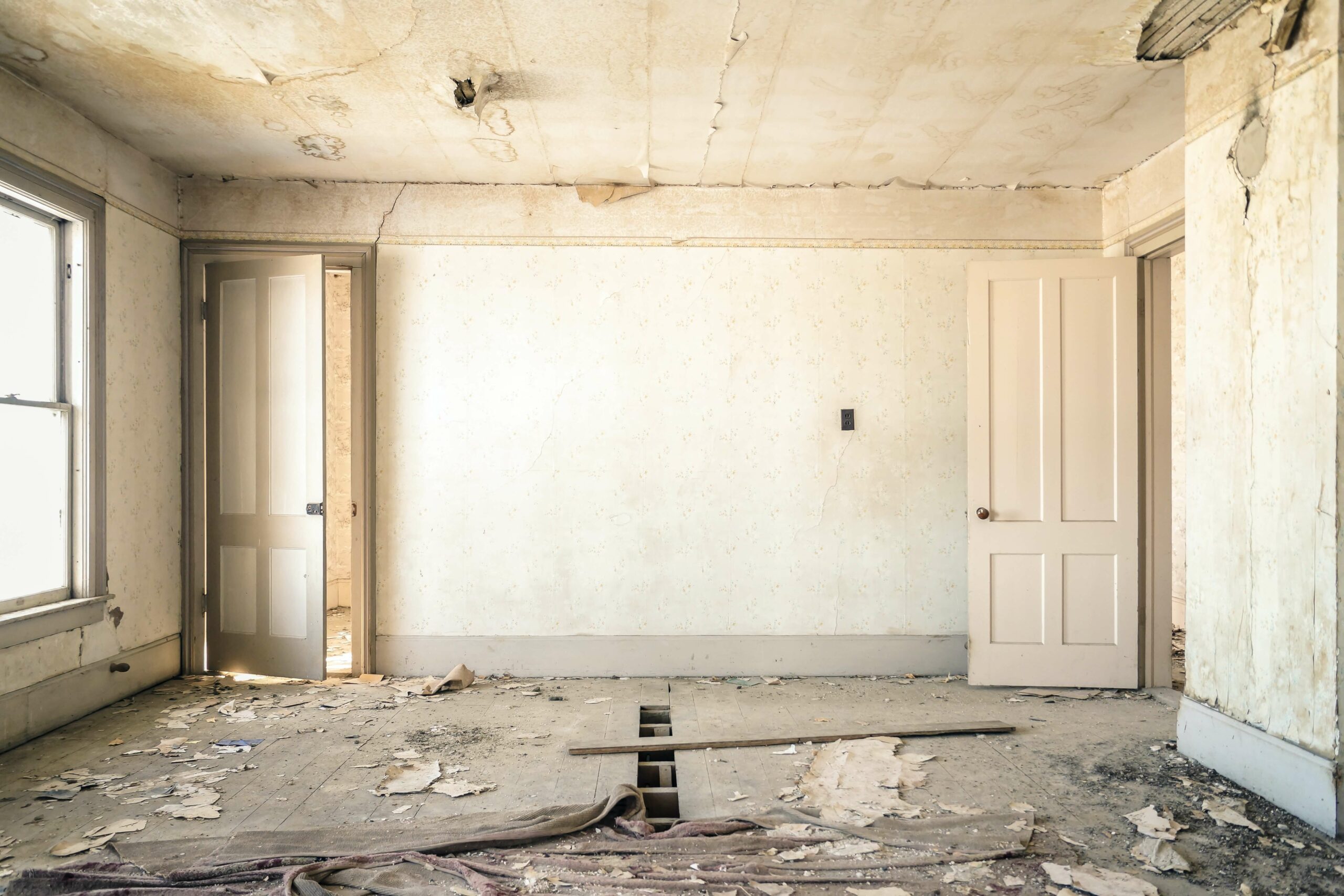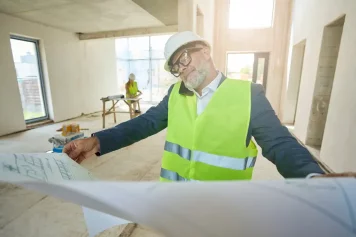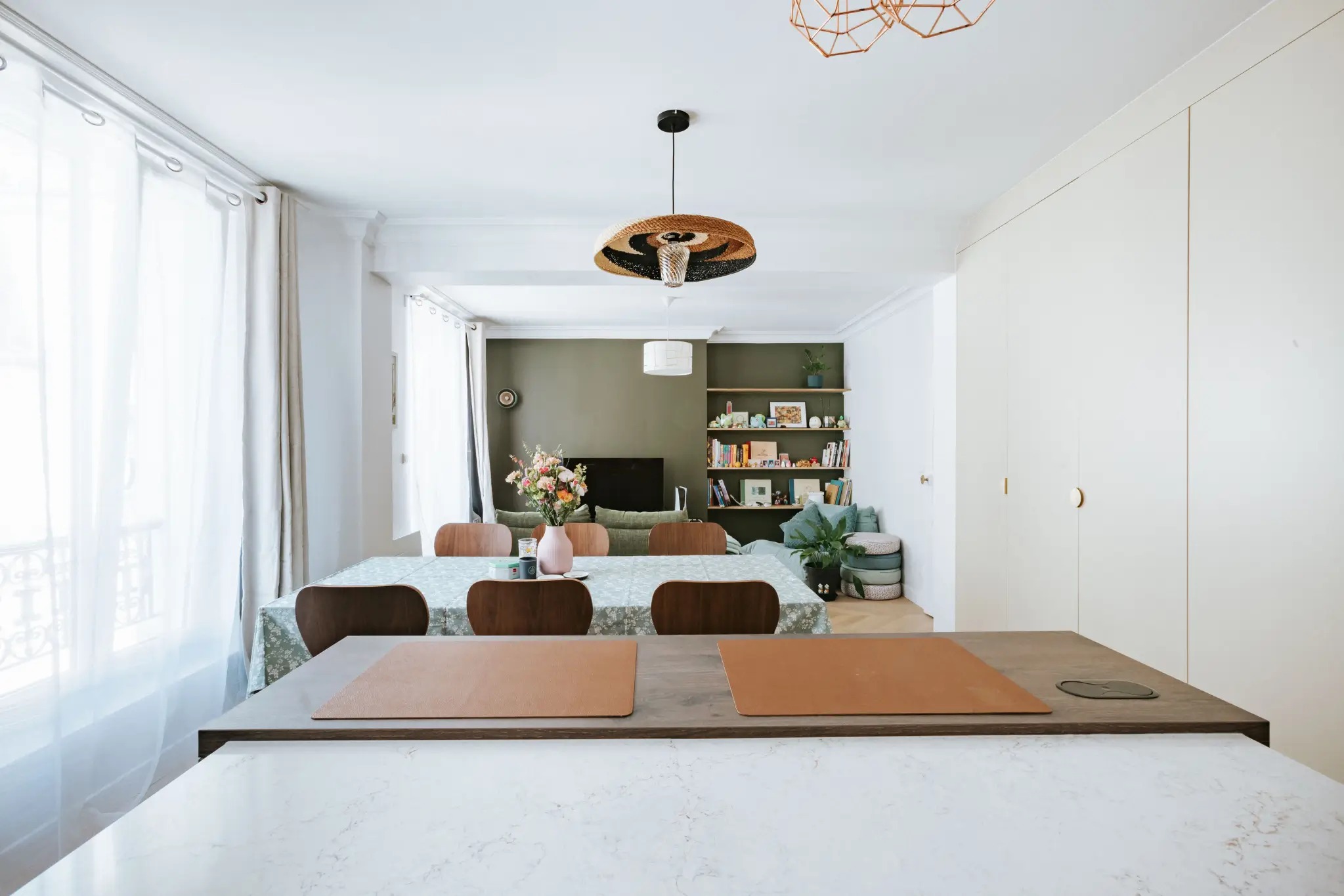La rénovation énergétique en copropriété concerne l’ensemble des actions et des travaux entrepris dans un immeuble divisé en lots appartenant à différents propriétaires. Ce guide détaille les aides financières existantes. Ces dispositifs facilitent les travaux.
Ils améliorent la performance énergétique des bâtiments. Les copropriétaires peuvent ainsi bénéficier d’économies d’énergie. Des solutions de financement sont disponibles.
Elles allègent le coût des projets de rénovation. L’entreprise spécialisée en rénovation Reno accompagne ces projets. Elle offre son expertise aux copropriétaires. Reno est basée à Paris. Elle est experte en rénovation d’appartement et de maison. La rénovation énergétique est un enjeu majeur.
Elle permet de réduire les dépenses. Elle valorise le patrimoine immobilier. De nombreuses aides existent. Elles sont destinées aux copropriétés. Cet article vous guide à travers ces dispositifs. Il vous informe sur les démarches à suivre.
Comprendre les enjeux de la rénovation énergétique en copropriété
La rénovation énergétique transforme nos habitations collectives. Ces travaux deviennent essentiels pour notre confort quotidien. Ils représentent aussi un défi financier important.
L’état actuel du parc immobilier collectif en France
Notre pays compte des millions de logements en copropriété. Beaucoup souffrent d’une mauvaise isolation thermique. Cette situation pèse lourdement sur les factures des habitants.
Les chiffres clés des passoires thermiques en copropriété
Les bâtiments énergivores dominent encore le paysage urbain français. Plus de 5 millions de logements reçoivent l’étiquette F ou G. Ces habitations consomment trop d’énergie chaque année. Le registre national des copropriétés confirme cette tendance inquiétante. Ces constructions anciennes nécessitent une intervention rapide. Reno vous propose des solutions adaptées à votre copropriété. Leurs experts évaluent précisément vos besoins énergétiques.
L’impact sur la facture énergétique des copropriétaires
Les dépenses de chauffage explosent dans ces immeubles mal isolés. Chaque hiver apporte son lot d’angoisse financière. Les copropriétaires subissent cette situation depuis trop longtemps. Les économies d’énergie deviennent donc prioritaires. Une bonne isolation réduit considérablement ces coûts. La performance énergétique influence directement votre budget mensuel.
Les bénéfices d’une amélioration de la performance énergétique
Rénover son immeuble apporte de nombreux avantages concrets. Ces améliorations se ressentent immédiatement après les travaux. Elles transforment durablement votre qualité de vie quotidienne.
Économies d’énergie et réduction des charges
La consommation énergétique diminue après une bonne rénovation. Vos factures de chauffage baissent significativement. Le retour sur investissement apparaît en quelques années. Les travaux d’isolation murale offrent les meilleurs résultats. Le remplacement des fenêtres complète efficacement cette démarche. Un gain énergétique de 30% minimum devient facilement atteignable.
Valorisation du patrimoine immobilier
Votre bien immobilier gagne en valeur après rénovation. Les acheteurs recherchent désormais des logements économes. Le diagnostic de performance énergétique influence leur décision. Un appartement bien rénové se vend plus rapidement. Il atteint également un prix de vente supérieur. Cette plus-value compense largement votre investissement initial. Un devis travaux vous aide à planifier cet investissement.
Confort thermique et qualité de vie
L’isolation améliore considérablement votre confort quotidien. Les variations de température disparaissent entre les pièces. Les sensations de courants d’air appartiennent au passé. L’humidité diminue également dans tout le logement. Ces changements favorisent une meilleure santé respiratoire. Le silence règne aussi grâce à l’isolation phonique associée. Votre habitat devient véritablement un cocon protecteur.
Le cadre réglementaire actuel
La législation évolue rapidement dans ce domaine. Les copropriétés doivent s’adapter aux nouvelles exigences. Ces règles visent à accélérer la transition énergétique nationale.
Les obligations légales pour les copropriétés
Le plan pluriannuel devient obligatoire pour les immeubles collectifs. Chaque copropriété doit réaliser un audit énergétique complet. Le syndicat de copropriétaires organise ensuite les votes nécessaires. Ces démarches administratives suivent un calendrier précis. La France impose désormais ces études préalables. Elles conditionnent l’accès aux différentes aides financières disponibles.
Le calendrier des interdictions de location pour logements énergivores
Les propriétaires doivent respecter de nouvelles échéances strictes. Les logements classés G deviennent interdits à la location. Cette mesure s’applique progressivement jusqu’en 2028. Les appartements classés F suivront rapidement. Ces contraintes poussent à entreprendre rapidement les travaux nécessaires. Éco-Rénovons Paris accompagne cette transformation urbaine massive. Le parc immobilier français vit une révolution énergétique sans précédent.

Les étapes clés d’un projet de rénovation énergétique en copropriété
Rénover une copropriété demande une organisation méthodique. Chaque étape conditionne la réussite du projet global. Cette planification garantit des résultats optimaux pour tous.
L’audit énergétique, point de départ indispensable
L’analyse technique constitue la première phase cruciale. Elle révèle les faiblesses thermiques de votre immeuble. Cette évaluation oriente ensuite toutes vos décisions collectives.
Contenu et objectifs de l’audit
L’audit examine minutieusement l’enveloppe du bâtiment. Il analyse aussi tous les systèmes énergétiques existants. Les thermographies repèrent précisément les ponts thermiques. Cette étude mesure également la qualité de ventilation actuelle. Les spécialistes calculent ensuite différents scénarios d’amélioration. Chaque option présente un rapport coût/efficacité différent. L’amélioration de la performance énergétique devient ainsi quantifiable. Cet outil d’aide à la décision éclaire les copropriétaires.
Comment choisir un prestataire qualifié
La compétence de l’auditeur influence la qualité des résultats. Recherchez des professionnels certifiés RGE Études. Vérifiez leurs références sur des projets similaires. Leur expérience en copropriété reste indispensable. Comparez plusieurs devis travaux rénovation avant votre choix final. Les honoraires varient selon la taille de l’immeuble. L’investissement dans un bon audit reste toujours rentable.
Interpréter les résultats pour définir les priorités
Le rapport d’audit présente différentes solutions techniques. Il hiérarchise les travaux selon leur efficacité énergétique. Les économies potentielles apparaissent clairement pour chaque intervention. Le temps de retour sur investissement guide vos choix. Certains travaux deviennent prioritaires par leur impact immédiat. L’assistance à maîtrise d’ouvrage aide à comprendre ces données complexes. Elle traduit les termes techniques en avantages concrets.
La prise de décision collective en assemblée générale
La gouvernance partagée caractérise la copropriété. Chaque propriétaire participe aux choix importants. Cette dynamique collective nécessite une communication efficace.
Préparation et présentation du projet aux copropriétaires
La communication commence bien avant l’assemblée générale. Des réunions d’information préparent les esprits aux changements. Les documents explicatifs circulent entre tous les propriétaires. Les bénéfices personnels doivent apparaître clairement pour chacun. Les économies d’énergie futures justifient l’investissement initial. Le prix rénovation m2 d’une maison donne une référence utile aux copropriétaires. Cette transparence financière rassure les plus hésitants.
Les majorités requises selon les types de travaux
La législation définit différents seuils de majorité. Les travaux d’économie d’énergie bénéficient de règles assouplies. La majorité simple suffit pour certaines interventions essentielles. Cette simplification facilite grandement les prises de décision. Le projet de rénovation énergétique avance ainsi plus rapidement. La réglementation encourage activement ces transformations collectives. Votre syndic connaît parfaitement ces dispositions légales spécifiques.
L’importance d’une communication transparente
La transparence construit la confiance entre copropriétaires. Chaque étape du projet mérite une explication claire. Les aspects techniques restent accessibles à tous. Les coûts apparaissent détaillés dans les documents partagés. Cette approche honnête prévient les blocages ultérieurs. Elle favorise l’adhésion collective au projet commun. Le syndicat de copropriétaires devient le garant de cette communication.
Le choix des professionnels pour accompagner votre projet
L’expertise technique détermine la qualité finale des travaux. Les intervenants doivent posséder des compétences spécifiques. Leur sélection constitue une étape déterminante du projet.
Le rôle de l’assistance à maîtrise d’ouvrage
L’AMO représente vos intérêts face aux entreprises. Elle traduit vos besoins en cahier des charges précis. Cette mission comprend aussi le suivi rigoureux des travaux. Son expertise garantit la qualité des prestations réalisées. L’assistance à maîtrise d’ouvrage sécurise votre investissement collectif. Elle veille au respect des délais annoncés. Son indépendance protège les intérêts de la copropriété.
Sélection des entreprises et artisans qualifiés
Les labels RGE attestent des compétences spécifiques requises. Vérifiez systématiquement ces certifications avant signature. Choisir son artisan rénovation demande une attention particulière. Les références constituent également un critère décisif. Visitez leurs chantiers précédents quand possible. Les avis clients offrent aussi des informations précieuses. Les certificats d’économie d’énergie dépendent de ces qualifications professionnelles.
MaPrimeRénov’ Copropriété et autres aides financières majeures
Le financement reste le principal frein aux projets collectifs. Heureusement, de nombreuses aides existent aujourd’hui. Elles rendent accessibles ces travaux essentiels pour tous.
Fonctionnement et conditions d’éligibilité de MaPrimeRénov’
Cette aide publique transforme le paysage de la rénovation énergétique. Elle soutient spécifiquement les copropriétés dans leurs projets. Son mécanisme simplifie grandement les démarches administratives.
Montants disponibles selon le gain énergétique
MaPrimeRénov’ copropriété propose une aide proportionnelle aux économies réalisées. Le montant peut atteindre 25% du coût total des travaux. Un bonus supplémentaire récompense les rénovations ambitieuses. Les copropriétaires modestes reçoivent des aides individuelles complémentaires. Ce système encourage les projets globaux et cohérents. Les primes augmentent avec le gain énergétique obtenu. Le prix rénovation cuisine s’intègre dans ce calcul global. Votre syndicat de copropriétaires reçoit directement ces subventions.
Démarches pour constituer un dossier solide
La demande intervient avant le démarrage des travaux. L’audit énergétique constitue la première pièce indispensable. Il démontre précisément le gain thermique prévu. Votre projet doit améliorer la performance d’au moins 35%. Les entreprises sélectionnées doivent posséder la certification RGE. Cette qualification garantit leur compétence technique. Le dossier comprend également les devis détaillés. La plateforme en ligne simplifie ces démarches administratives.
Calendrier de versement des subventions
L’avance de démarrage facilite le lancement des travaux. Elle représente 30% du montant total accordé. Des acomptes suivent ensuite l’avancement du chantier. Le solde arrive après la réception définitive des travaux. Ce système sécurise le financement pour votre copropriété. Il rassure également les entreprises intervenantes. Les délais de versement restent généralement courts. Cette fluidité financière accélère la réalisation de votre projet.
L’éco-prêt à taux zéro collectif (éco-PTZ)
Ce prêt bancaire complète idéalement les subventions directes. Il finance le reste à charge sans intérêts. Cette solution allège considérablement votre trésorerie personnelle.
Avantages du prêt à taux zéro pour la copropriété
L’éco-PTZ copropriété présente de nombreux atouts pratiques. Les intérêts sont entièrement pris en charge par l’État. Tous les copropriétaires peuvent en bénéficier sans conditions de ressources. La durée de remboursement s’étend jusqu’à 15 ans. Cette longue période réduit significativement les mensualités. Le prêt finance directement le syndicat de copropriétaires. Cette organisation simplifie grandement les démarches administratives. L’exemple de devis rénovation appartement aide à préparer votre dossier bancaire.
Conditions d’obtention et montants accessibles
L’éco-prêt exige des travaux améliorant la performance énergétique. Le montant peut atteindre 30 000€ par logement. Cette somme couvre généralement le reste à charge après subventions. Les travaux doivent commencer dans l’année suivant l’obtention. Des entreprises qualifiées RGE réalisent obligatoirement ces interventions. Votre banque vérifie ces différents points techniques. Elle accompagne votre syndicat dans la constitution du dossier. Le financer les travaux devient ainsi beaucoup plus accessible.
Articulation avec les autres dispositifs
L’éco-prêt à taux se cumule parfaitement avec MaPrimeRénov’. Cette complémentarité optimise votre plan de financement global. Les certificats d’économies d’énergie s’ajoutent également à ces aides. Votre copropriété bénéficie ainsi d’un soutien financier maximal. Cette combinaison rend la rénovation énergétique très attractive. Le reste à charge diminue considérablement pour chaque propriétaire. Cette approche globale facilite grandement vos décisions collectives.
Les certificats d’économies d’énergie (CEE)
Ce dispositif unique implique les fournisseurs d’énergie. Ils financent vos travaux d’économies d’énergie. Ce système original complète utilement les aides publiques.
Principe de fonctionnement des CEE
Les fournisseurs d’énergie doivent encourager les économies chez leurs clients. La loi les oblige à obtenir des certificats d’économie d’énergie. Ils achètent ces certificats auprès des particuliers réalisant des travaux. Ce mécanisme crée une aide financière supplémentaire. Les économie d’énergie CEE représentent un montant significatif. Ce dispositif fonctionne sans conditions de ressources. Il concerne tous les travaux améliorant la performance énergétique.
Comment maximiser cette source de financement
Plusieurs fournisseurs proposent des offres concurrentes. Comparez systématiquement leurs propositions financières. Les primes varient considérablement selon les périodes. Certains travaux bénéficient de bonifications spéciales. Les zones géographiques influencent également les montants proposés. Les conseils pour un rafraîchissement d’appartement peuvent inclure ces optimisations. Négociez toujours ces primes avant de signer vos devis.
Les offres des fournisseurs d’énergie
Les grands énergéticiens proposent des programmes spécifiques. Ces offres simplifient vos démarches administratives. Certains versent la prime dès l’acceptation du devis. D’autres attendent la fin des travaux pour payer. Des partenariats existent avec certaines entreprises spécialisées. Cette organisation facilite grandement vos démarches. Le montant varie selon l’ampleur de votre projet. Les rénovations globales reçoivent des primes majorées.

Les dispositifs complémentaires pour financer les travaux
D’autres aides viennent compléter ce dispositif principal. Elles ciblent certaines situations ou territoires spécifiques. Ces soutiens additionnels réduisent encore votre reste à charge.
Les aides de l’Agence nationale de l’habitat (Anah)
Cet organisme public accompagne depuis longtemps la rénovation. Il propose des solutions adaptées aux différentes situations. Son expertise garantit un soutien efficace et personnalisé.
Habiter Mieux pour les copropriétaires modestes
Ce programme aide individuellement les propriétaires aux revenus limités. Il complète les subventions collectives de la copropriété. L’Anah verse directement cette aide complémentaire. Les plafonds de ressources restent relativement accessibles. De nombreux ménages peuvent ainsi en bénéficier. Cette aide réduit significativement le reste à charge personnel. Les propriétaires modestes participent ainsi aux projets collectifs. Un devis rénovation salle de bain peut aussi bénéficier de cette aide.
Aides spécifiques pour les copropriétés fragiles
Certains immeubles rencontrent des difficultés financières importantes. L’Anah propose alors des dispositifs d’accompagnement renforcés. Ces aides concernent les copropriétés classées fragiles. Des subventions supplémentaires facilitent leurs travaux urgents. L’habitat modeste reçoit une attention particulière dans ce cadre. L’agence finance également des missions d’ingénierie sociale. Ce soutien global transforme durablement ces copropriétés en difficulté.
Cumul possible avec MaPrimeRénov’
Les aides Anah se combinent parfaitement avec MaPrimeRénov’. Cette complémentarité optimise votre plan de financement global. Le dispositif prévoit explicitement cette articulation. Les dossiers peuvent même être déposés simultanément. Cette organisation simplifie vos démarches administratives. Le cumul améliore significativement votre reste à charge. La rénovation énergétique devient vraiment accessible à tous.
Les dispositifs locaux et régionaux
Les collectivités territoriales soutiennent activement la transition énergétique. Elles proposent des aides adaptées à leurs territoires. Ces dispositifs locaux complètent utilement les programmes nationaux.
Éco-Rénovons Paris et initiatives similaires
La capitale déploie un programme ambitieux de rénovation énergétique. Éco-Rénovons Paris accompagne les copropriétés parisiennes. Ce dispositif offre un soutien technique et financier complet. Des conseillers spécialisés vous guident gratuitement. Ils vous aident à mobiliser toutes les aides disponibles. La décoration intérieure de luxe s’intègre harmonieusement après ces travaux. D’autres grandes villes proposent des programmes similaires.
Soutien des communautés de communes et agglomérations
Les intercommunalités développent leurs propres dispositifs d’aide. Ces programmes s’adaptent aux spécificités locales. Ils complètent les dispositifs nationaux déjà existants. Certaines communautés financent directement des audits énergétiques. D’autres proposent des subventions pour certains travaux spécifiques. Les conseillers locaux connaissent parfaitement ces opportunités. Ils vous orientent vers les solutions les plus adaptées.
Réalisations exemplaires de Reno à Paris
Cette entreprise spécialisée en rénovation a transformé de nombreuses copropriétés parisiennes. Leurs projets conjuguent performance énergétique et esthétique. Ils respectent l’identité architecturale de chaque immeuble. Reno maîtrise parfaitement les contraintes techniques locales. Leur expertise garantit des rénovations énergétiques réussies. Leurs clients témoignent régulièrement de leur satisfaction. La qualité d’exécution caractérise toutes leurs interventions.
Les avantages fiscaux liés à la rénovation énergétique
L’État propose également des incitations fiscales importantes. Ces dispositifs allègent significativement le coût global. Ils s’ajoutent aux subventions directes déjà évoquées.
La TVA à taux réduit sur les travaux
Les travaux de rénovation énergétique bénéficient d’une TVA à 5,5%. Cette réduction représente une économie substantielle immédiate. Elle s’applique automatiquement sur vos factures. Tous les propriétaires en bénéficient sans conditions de ressources. Cette TVA réduite concerne tous les travaux d’amélioration thermique. Elle s’applique également aux travaux induits directement liés. Ce dispositif fiscal simple fonctionne sans dossier spécifique.
Déductions fiscales possibles
Certains propriétaires bailleurs peuvent déduire ces travaux de leurs revenus. Cette possibilité réduit leur impôt sur le revenu. Le déficit foncier créé se reporte sur plusieurs années. Le prix rénovation au m2 s’amortit ainsi fiscalement. Cette optimisation rend l’investissement particulièrement intéressant. Les propriétaires occupants bénéficient d’autres avantages spécifiques. Un conseiller fiscal peut vous aider à optimiser votre situation.
Exonérations temporaires de taxe foncière
Certaines collectivités proposent des exonérations de taxe foncière. Cette réduction s’applique après d’importants travaux énergétiques. La durée varie généralement entre trois et cinq ans. L’économie représente souvent plusieurs centaines d’euros annuels. Cette incitation encourage les projets ambitieux. Elle valorise les efforts des propriétaires responsables. Renseignez-vous auprès de votre mairie sur ce dispositif.








